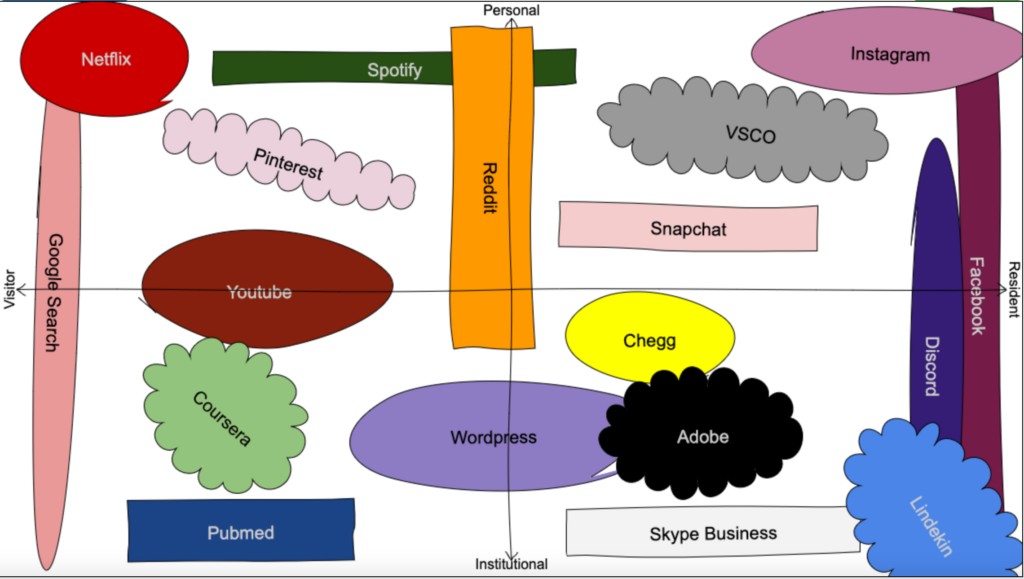- Building a reputation and trust in a connected culture can be difficult; how are you building a network of individuals who are dynamic, reliable, & participatory?
It is true that building reputation and trust in culture is difficult, there are some my personal strategies to build a dynamic, reliable, & participatory PLN.
First, building a reputation for myself is important. Only when I have a certain standard of constant high-quality work, responsive and insightful conversation and active communication delivery, there will be more chances for me to attract more excellent people be willing to share information with me and learn from each other. Second, actively engage with potential network members. For instance, actively connect with people who share the same background and profession, such as following them on social media, commenting and sharing their posts to generate more communication and thought collision. Finally, also the most important strategy, is to maintain the valuable network we create. I usually build a group chat for my PLN, and regularly and frequently share information in the chat. In this case, the PLN is not only limited in the form of commenting posts, but communicating anytime through private chat, which forms a constant and sustainable PLN.
- Are you leveraging healthy relationships from your PLN for growth?
I always use PLN as a good method to help me achieve personal growth in many aspects. Apart from professional development and career exploration, I’ve built other PLNs for various purposes, such as building a photography PLN to improve my photo-shooting skills, and nutrition PLN to discuss diet-keeping methods. The healthy relationships from PLN help me by actively sharing experiences, thoughts, and conclusions and strategies for photo-shooting and diet-keeping, which enables me to keep learning from them, in a constant and enjoyful way. I can always get the latest information related to camera updating and new diet ways and recipes from the PLN, avoiding me from detouring from correct way and improve my skills more quickly.
- How would you create a PLN prior to engaging in a social media campaign on a topic of your choice? Consider how you would introduce yourself to others consider how you would engage in initial conversation to generate interest in your campaign professionally.
Creating a PLN in advance is important to connect with the social media campaign on the chosen topic. First, I will choose the most suitable and relevant social media platform for my topic. Next I will build my digital profile to maximumly show my understanding, passion, competencies and achievements relevant to my chosen topic, in order to introduce myself and showcase my topic-relevant experience. The well-developed profile is more likely to attract more people sharing similar backgrounds and interests, and increase the opportunity of professional network and communication. Take me as an example, if I choose the topic of professional development and career path, I would choose Linkedin, Twitter or Facebook which are popular and most appropriate platforms for career development and network. Then when I build my profile, I pay attention to showcase my education, internship and project experience, my working values, and all kinds of my competencies that could attract and connect with potential employers or people in the same industry. During networking, it is also significant to generate meaningful and engaging conversation with people connected. When I was building my PLN, I always initiate the conversation to share and exchange information with others. I usually spend 5 minutes first to get to know and learn about the person, and at the same time introduce myself (my basic information and background) to them. Then I gradually start the information sharing process by asking questions about their professional experience, and something I am curious after I read their profile. When they ask me about my experience, I also try to conclude and share my refined thoughts with them, forming a good back-and-forth loop. From the conversation, both sides can learn more and gain more understanding about the industry, and at the same time enjoy the conversation and the process of information share. Finally, I usually say ‘Happy to talk to you. It’s very insightful and I enjoy a lot! Hope we could have another meaningful conversation next time.’ to invite people for further communication. In this way, an engaging and insightful conversation is generated.
Comment:

Hey Wanqi, First of all, I loved reading your blog. It clearly states everything that was asked in simple and…
Hi Wanqi, Your paragraph provides a good example of how an effective PLN can help with both in-course and post-course…
Hi Qinjiang, After reading your blog it gave me a lot of new insights. I agree with your article about…
Hi Qinjiang, First of all after reading your thoughts, I agree with you about digital identity not only to get…
Hello Wanqin, I really enjoyed reading your blog post, it was very insightful! I really liked how you mentioned that…